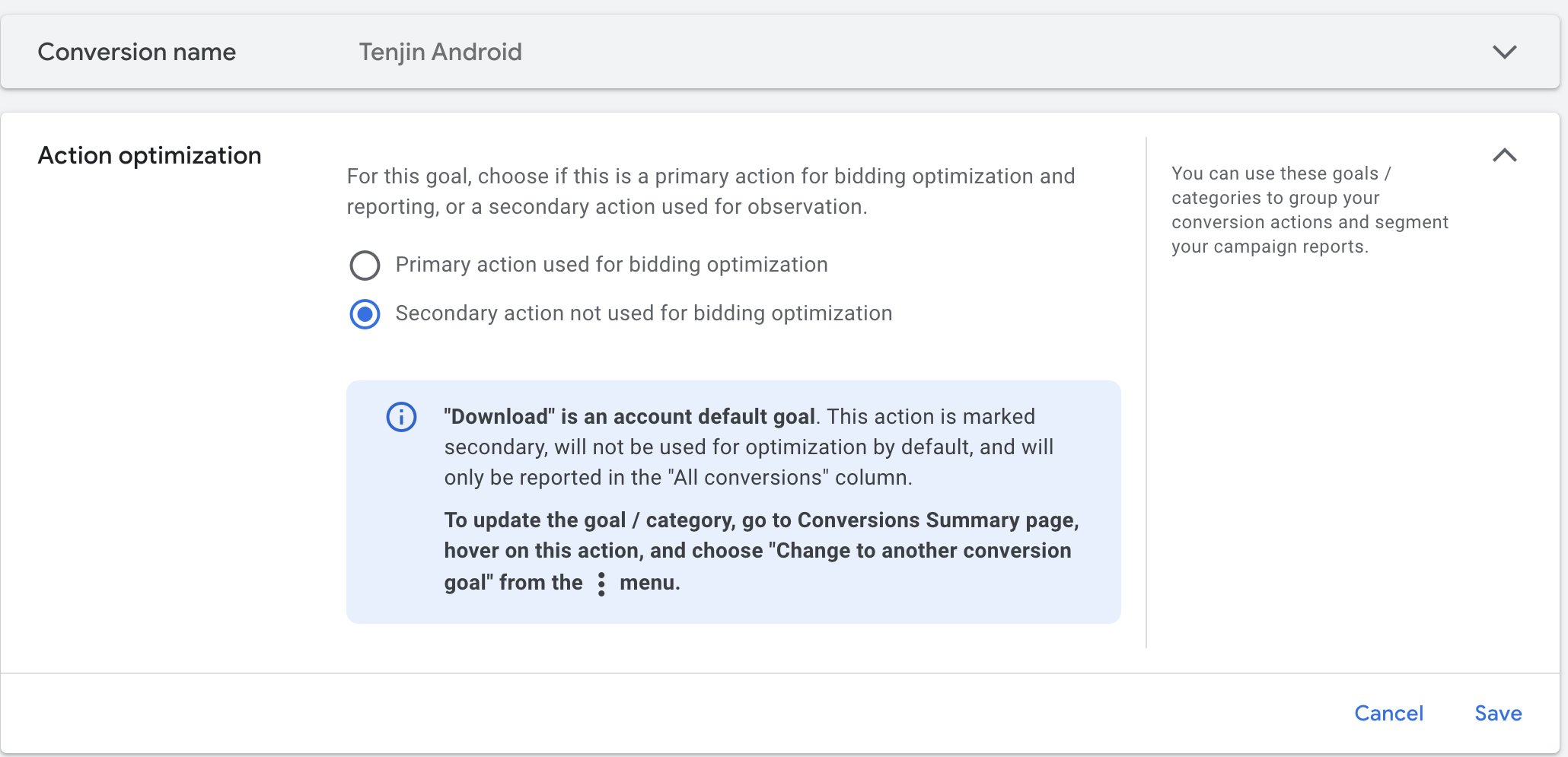Google Ads Integration with Tenjin: A Step-by-Step Guide for Mobile Campaign Tracking
Tenjin's integration with Google allows app developers to run campaigns on Google without tracking links, and Tenjin will handle install attribution. Follow the steps below to set up your Google account in Tenjin. Ensure you have the latest Tenjin SDK integrated.
1. Google Ads ICM Measurement for iOS Apps (Recommended for iOS)
Tenjin supports Google Ads Integrated Conversion Measurement (ICM) for iOS apps, enabling privacy-preserving install attribution without using device identifiers. To enable ICM tracking: Integrate the Tenjin SDK following the dedicated guide for your environment:
- Unity SDK Integration Guide
- Native iOS SDK Integration Guide
- Flutter SDK Integration Guide
- React Native SDK Integration Guide
For other SDKs or plugin frameworks, please reach out to support@tenjin.com for integration instructions.
Once the integration is complete, Tenjin will automatically start claiming probabilistic installs under the “Tracked Installs” metric.
It is recommended to set it to 24 hours for Google Ads Probabilistic Matching Attribution window. This can be configured as per the guide here.
2. Generate a Link ID in your Google Ads dashboard (Mandatory for Android and iOS)
-
On the left side, go to Tools -> Data Manager -> Connected products -> Third-party app analytics.

-
Click the + Link ID button, select Tenjin from the dropdown, and choose your mobile app's platform. Use the Look up your app field to find your app, then click Create link ID. If you encounter an error, contact your Google Ads account manager.

-
Click the copy button to copy your Link ID. You'll need to add this to Tenjin's dashboard as described below.
-
Click Done. The status will show "Unverified" until you add your link ID to your third-party account and conversion data starts flowing into Google Ads.
3. Add your Link ID on Tenjin’s Dashboard (Mandatory for Android and iOS)
-
Ensure you've added "Google Ads" accounts under CONFIGURE → Channels in the Tenjin dashboard.
-
Go to the Apps tab and select your app.
-
Go to Callbacks tab.
-
Select Google Ads in the Channels and Partners drop-down. Enter your Link ID and click Save.

-
Activate the Google Ads Install callback by turning on the status toggle, as shown below.
.png)
4. Import conversion events from Tenjin (Mandatory for Android and iOS)
-
Click the Goals icon on the left side of the Google Ads dashboard.
-
Under Conversions section, click Summary.
-
Click the +Create conversion action button.
-
Select the Download from the conversion options.

-
You will see the conversion events. (Note: If the event isn't visible, check your Google Ads settings page in a few hours. Events typically take a couple of hours to import after creating the Link ID.)

-
Click IMPORT AND CONTINUE.
-
When creating a campaign, select the conversion event you just created in the Bidding section.
.png)
-
For Android, if you want to use Firebase conversion event for bidding optimization, please select Firebase conversion event as Primary action, and Tenjin conversion event you just set up as Secondary action, as in the screenshot below.

Setting Firebase as your primary conversion event can lead to a higher discrepancy between Tracked Installs and Reported Installs.
For Google Ads tROAS campaigns, in-app ad (IAA) revenue must be sent directly from Firebase for optimization, as currently, Google Ads does not accept IAA data via MMP callbacks. Tenjin will still track and attribute these campaigns. You can learn more about these campaigns from here.
How to setup in-app conversions on Google Ads Dashboard (Optional)
-
Setup your callback in Tenjin. On Tenjin dashboard, go to Apps → (Select your app) → Callbacks, then set up the Google Ads custom event callback.
-
To set up conversion event on Google Ads dashboard.
- Click the Goals icon on the left side of the Google Ads dashboard.
- Under Conversions section, click Summary.
- Click the +Create conversion action button.
-
Once you set up the Google Ads custom callback in Step 1, the event will appear in the list for you to import.

Conversion window
The default is 90 days. This determines how far back Google will track in-app events. For example, if a purchase event occurs on 5/1 and Google recorded a click event for that user on 1/1, the purchase won't be counted. However, if Google recorded the click on 3/1, the purchase will be counted.